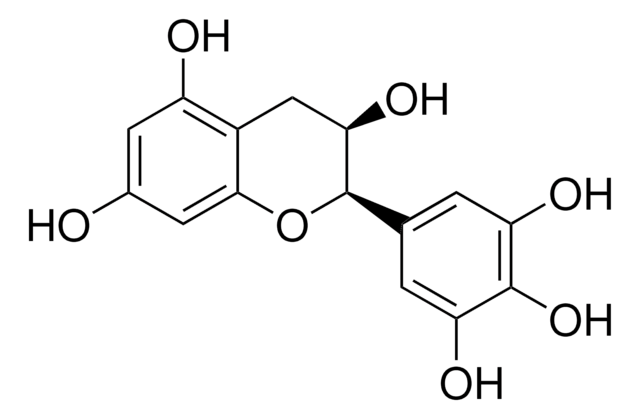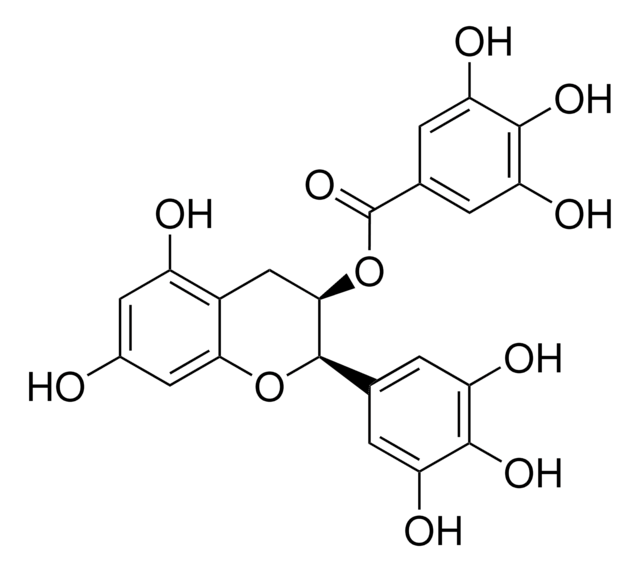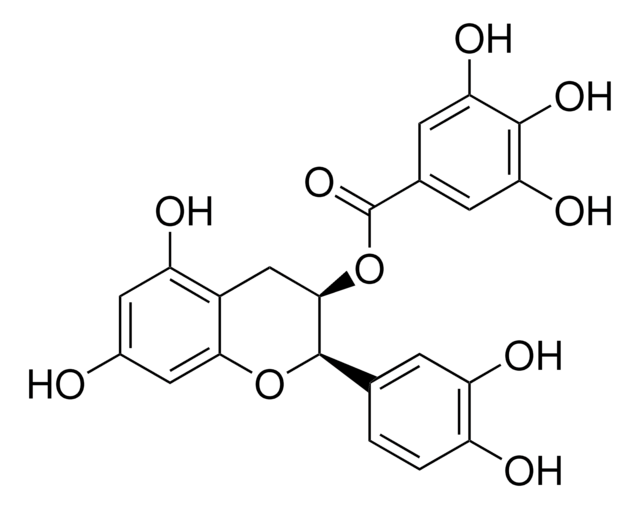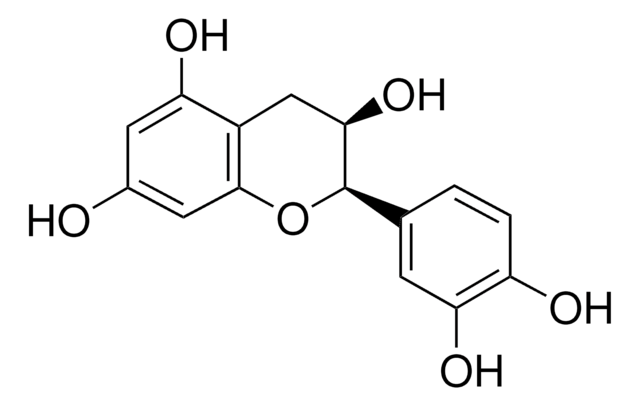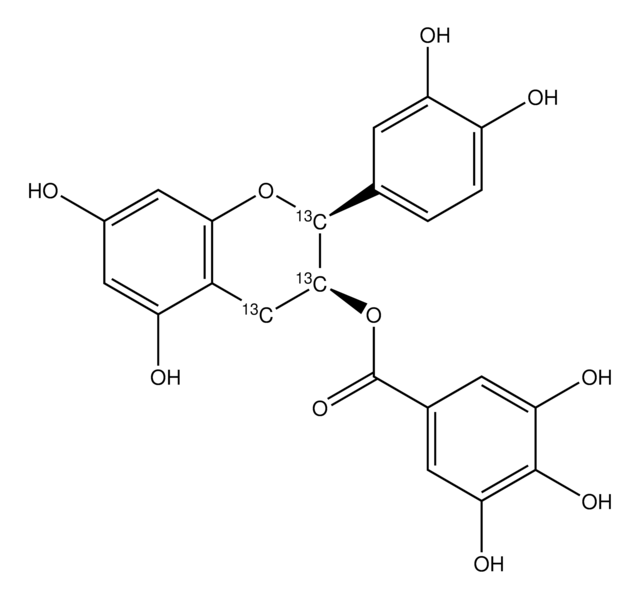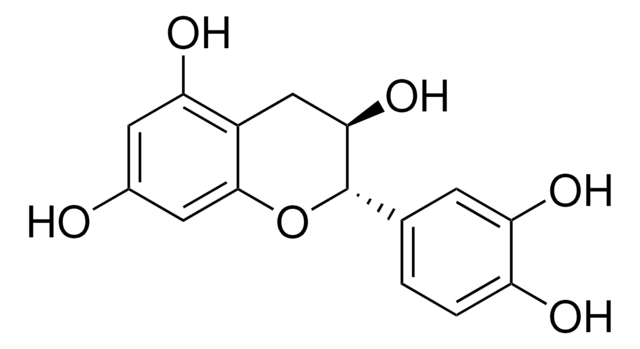E3893
(−)-Epicatechin gallate
≥98% (HPLC), from green tea
Sinónimos:
(−)-cis-2-(3,4-Dihydroxyphenyl)-3,4-dihydro-1(2H)-benzopyran-3,5,7-triol 3-gallate, (−)-cis-3,3′,4′,5,7-Pentahydroxyflavane 3-gallate, 3-O-Galloylepicatechin
About This Item
Productos recomendados
biological source
green tea
Quality Level
assay
≥98% (HPLC)
application(s)
metabolomics
vitamins, nutraceuticals, and natural products
storage temp.
2-8°C
SMILES string
Oc1cc(O)c2C[C@@H](OC(=O)c3cc(O)c(O)c(O)c3)[C@H](Oc2c1)c4ccc(O)c(O)c4
InChI
1S/C22H18O10/c23-11-6-14(25)12-8-19(32-22(30)10-4-16(27)20(29)17(28)5-10)21(31-18(12)7-11)9-1-2-13(24)15(26)3-9/h1-7,19,21,23-29H,8H2/t19-,21-/m1/s1
InChI key
LSHVYAFMTMFKBA-TZIWHRDSSA-N
Gene Information
human ... CYP1A2(1544)
¿Está buscando productos similares? Visita Guía de comparación de productos
Categorías relacionadas
General description
Application
- in cell proliferation assays on the human brain microvascular endothelial cells (HBMVECs) to understand its effectiveness against anti-ischemic/reperfusion injury
- as an inhibitor in Human Salivary α-Amylase (HAS) and α-Glucosidase (AGH) in inhibition assays
- may be used as a cancer chemopreventive polyphenol in two human colorectal cell lines HCT-116 and SW-480
- as an inhibitor to in vitro collagenase and elastase enzymes
- as a supplement in spermatozoa incubation to check its effectiveness against oxidative stress
Biochem/physiol Actions
signalword
Warning
hcodes
Hazard Classifications
Eye Irrit. 2 - Skin Irrit. 2 - STOT SE 3
target_organs
Respiratory system
Storage Class
11 - Combustible Solids
wgk_germany
WGK 3
flash_point_f
Not applicable
flash_point_c
Not applicable
ppe
Eyeshields, Gloves, type N95 (US)
Elija entre una de las versiones más recientes:
¿Ya tiene este producto?
Encuentre la documentación para los productos que ha comprado recientemente en la Biblioteca de documentos.
Los clientes también vieron
Artículos
Antioxidants protect biological systems from oxidative damage produced by oxygen-containing free radicals and from redoxactive transition metal ions such as iron, copper, and cadmium.
Nuestro equipo de científicos tiene experiencia en todas las áreas de investigación: Ciencias de la vida, Ciencia de los materiales, Síntesis química, Cromatografía, Analítica y muchas otras.
Póngase en contacto con el Servicio técnico